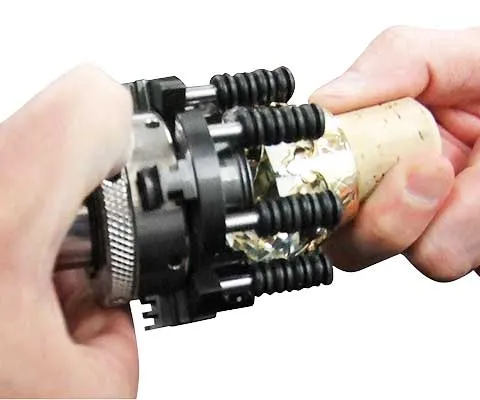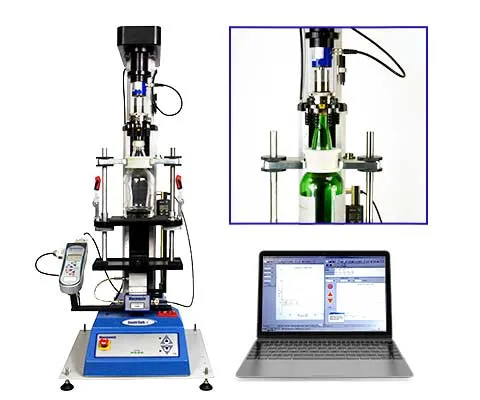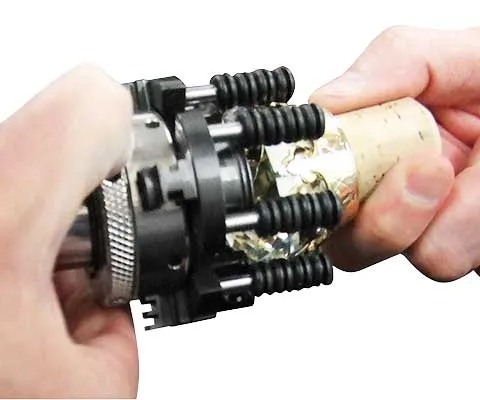Extraction testing of whisky stoppers


Solution
- Software-controlled Combi-Cork cork extraction measurement system
- Bespoke software tools to record force and torque data
Benefits
- Ultimate accuracy and repeatability in measuring a complex extraction process
- Confidence in the sealing and safety specification for their product
- Cyclic testing to measure repeated de-corking and resealing of the bottle
Requirement
To improve the quality and storage of their premium $1000 product, the R&D team at a leading Scottish whisky maker needed to optimise the design of their bottle stoppers. They decided that the strength and performance of their reusable stoppers could be ensured by systematic testing of the characteristics of both portions of the stoppers.
Cork portion:
- bottle-neck finish
- cork lubricant
Bar top portion:
strength of the adhesive that binds the bar top to the cork portion
- Torque - de-corking begins with a twist. Twisting of the cork must be possible using acceptable torque
- Extraction force - the cork is pulled up and out of the bottle. Pulling of the cork must be possible using acceptable force
The maker's stoppers must comply with the ISO 9727-5 standard, which specifies a test method for determining the maximum force needed to extract a cylindrical cork stopper.
Solution
Working closely with the R&D team, Mecmesin developed the CombiCork-i Extraction Tester, an innovative multi-function cork extraction testing system that tests both phases of de-corking (twist and pull) synchronously. A manually operated chuck grips the cork and a bottle cradle secures the bottle. The cradle is positioned using thumbnuts and threaded columns and the bottle is locked into the cradle using quick-release toggle clamps. When the test is begun, the chuck that is gripping the stopper rotates anti-clockwise and the cradle moves downward, mimicking the normal action of de-corking. Torque and force is recorded and the test ends when the stopper is removed. If data describing stopper performance over repeated opening and closing is required, multiple-cycles can also be programmed. The closing phase of the cyclic test is the opening test in reverse: that is, the chuck rotates the stopper clockwise and the cradle moves the bottle upward to meet the stopper's bar.
Torque data is sent to a PC running Mecmesin's Emperor Lite™ program and force data to the full Emperor™ program running on the same PC. A customised Excel® workbook combines the torque and force data for presentation of the test in statistical and graphical formats.
Other fixtures can be attached to the CombiCork-i so that tests on cork shear and tensile separation of the bar top and cork can also be performed.
Test equipment
The Combi Cork-i Extraction Tester includes:
- Bi-directional force and torque testing system
- Rotary torque sensor capacity 15 N.m
- Digital display AFTI
- Grips and fixtures for corks and bottles
- Emperor™ software and Emperor™ Lite software
- Dedicated Excel® workbook






![Split mandrel for jar cap [PDV14075] Split mandrel for jar cap [PDV14075]](/sites/default/files/styles/large/public/case-study/2024-04/1761-PDV14075-web.jpg.webp?itok=DSbMGFLY)

